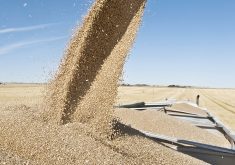This cattle market information is selected from the weekly report from Canfax, a division of the Canadian Cattlemen’s Association. More market information, analysis and statistics are available by becoming a Canfax subscriber by calling 403-275-5110 or at www.canfax.ca.
Fed cattle stronger
Fed cattle prices have improved by $6.50 per hundredweight for the last three weeks and are approaching the January high.
From first quarter lows to second quarter highs, fed prices have rallied eight percent compared to the 10-year average of 12 percent. Fed prices typically improve this time of year. Steady to higher prices are expected for next week. However, feeding margins remain negative with losses estimated at around $120-$150 per head.
Read Also

India slaps 30 per cent import duty on yellow peas
India has imposed a 30 per cent duty on yellow pea imports with a bill of lading date on or after Nov. 1, 2025.
This week, dressed sales ranged from $268-$270 per cwt. delivered. Live steers ranged from $159-$160.35 per cwt. while heifers traded $160.36-$162 per cwt.
There was a light volume of western Canadian fed cattle moving into the United States. Bids were comparable with local sales.
The Alberta-Nebraska cash to cash basis levels strengthened, going from -$14.85 to an estimated -$9.25 per cwt. this week.
For the week ending March 23, Canadian fed slaughter volumes totalled 50,875 head, about 10.7 percent larger than the same week last year. However, carcass weights are greater than last year so fed beef production is up nearly 12 percent.
Feeders steady
Feeders were steady to higher for the past week with calf prices setting a new high for the year.
More feeders are coming to market, and demand for grass cattle remains strong.
However, high feed costs and lack of profitability at the feeding level are keeping a lid on feeder prices.
Lethbridge barley is $270-$271 per tonne while corn is averaging $254 per tonne. Ontario barley is averaging $285 per tonne while corn is $199 per tonne.
Lightweight calves in Manitoba and Saskatchewan were at a premium to Alberta because U.S. interest is also supporting the calf market.
Calves in the 500-600 pound range in Alberta averaged $227 per cwt., Saskatchewan was $231.43, Manitoba was $228.33 and Ontario averaged $203.07.
Heavier feeders saw some strength this week but remain somewhat sluggish. Feeder steers are about $3 per cwt. above their low but still $10 per cwt. below the January highs. This week was the first week in some time that all calf and feeder prices were higher than a year ago.
Feeder exports dropped 28 percent for the week ending March 16 and were below a year ago for the first time since early February.
Cows and bulls
Live prices for slaughter cows and bulls at auction were moderate to steady.
Western bids on live D2 cows averaged $88 per cwt. and D3s were $78 per cwt. However, Ontario fell behind with D2 cows averaging $66.90 per cwt. and D3 cows at $55.20 per cwt.
Direct sale dressed bids were higher this week,. Rail bids were in the $170-$175 per cwt. range.
Cow slaughter has started to seasonally moderate, and last week western cow slaughter saw its smallest non-holiday week kill of the year at 8,308 head. This was the first week this year that western cow slaughter was below a year ago. Moderate supplies and improving trim demand should continue to support higher cull cow prices moving forward.
Cow slaughter volumes in the United States continue to be large with lots of dairy cows being sent to market. Despite larger slaughter volumes, 90 percent trim prices have been trending higher since the beginning of the year.
Cut-out values down
U.S. beef cut-out values are trading $5.50-$7.50 per cwt. higher than last year, partly because of the small decline in beef production. Beef purchasing in spring as Easter approaches is typically slower as retailers put more emphasis on holiday hams and turkeys.














